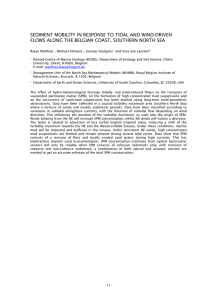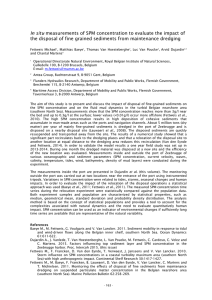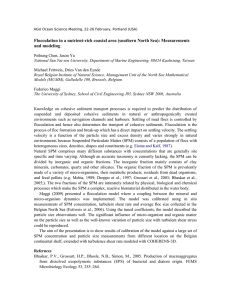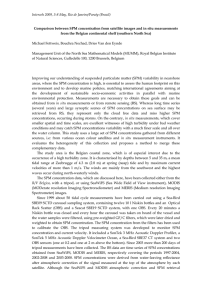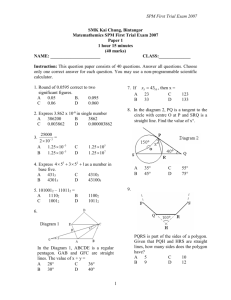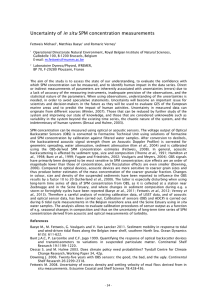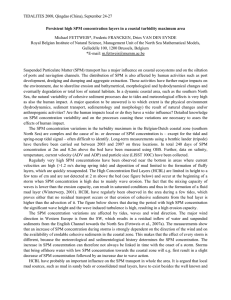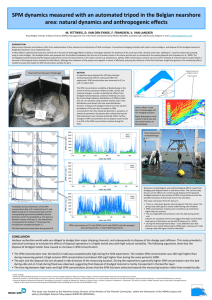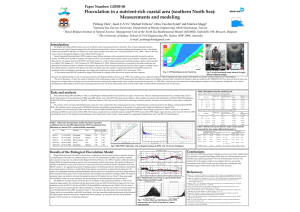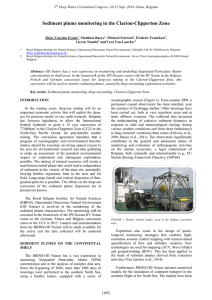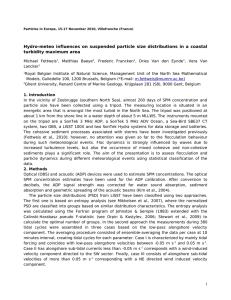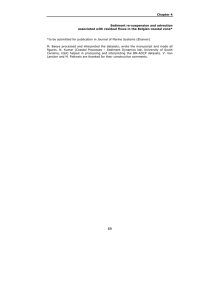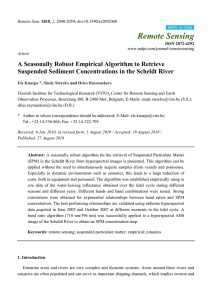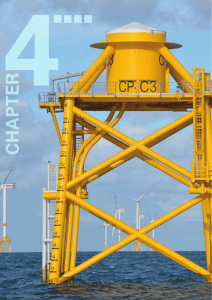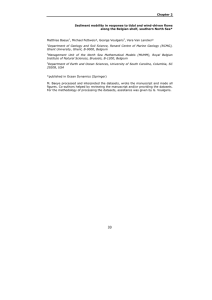Very high SPM concentrations in the southern Bight of the... detected from space
advertisement
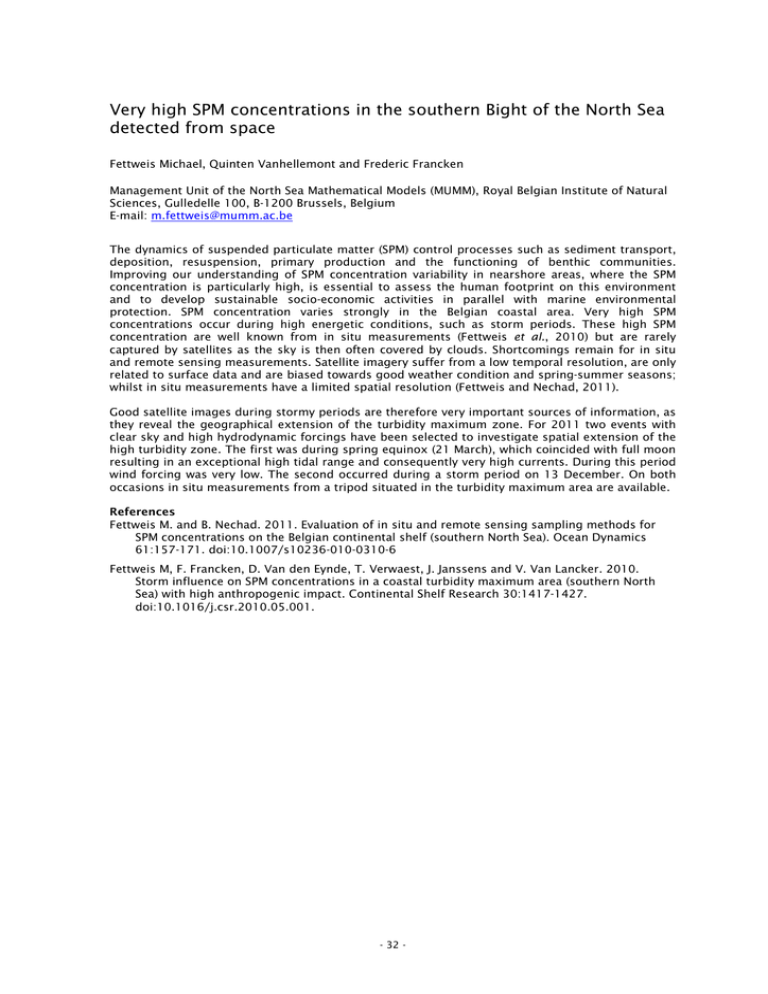
Very high SPM concentrations in the southern Bight of the North Sea detected from space Fettweis Michael, Quinten Vanhellemont and Frederic Francken Management Unit of the North Sea Mathematical Models (MUMM), Royal Belgian Institute of Natural Sciences, Gulledelle 100, B-1200 Brussels, Belgium E-mail: m.fettweis@mumm.ac.be The dynamics of suspended particulate matter (SPM) control processes such as sediment transport, deposition, resuspension, primary production and the functioning of benthic communities. Improving our understanding of SPM concentration variability in nearshore areas, where the SPM concentration is particularly high, is essential to assess the human footprint on this environment and to develop sustainable socio-economic activities in parallel with marine environmental protection. SPM concentration varies strongly in the Belgian coastal area. Very high SPM concentrations occur during high energetic conditions, such as storm periods. These high SPM concentration are well known from in situ measurements (Fettweis et al., 2010) but are rarely captured by satellites as the sky is then often covered by clouds. Shortcomings remain for in situ and remote sensing measurements. Satellite imagery suffer from a low temporal resolution, are only related to surface data and are biased towards good weather condition and spring-summer seasons; whilst in situ measurements have a limited spatial resolution (Fettweis and Nechad, 2011). Good satellite images during stormy periods are therefore very important sources of information, as they reveal the geographical extension of the turbidity maximum zone. For 2011 two events with clear sky and high hydrodynamic forcings have been selected to investigate spatial extension of the high turbidity zone. The first was during spring equinox (21 March), which coincided with full moon resulting in an exceptional high tidal range and consequently very high currents. During this period wind forcing was very low. The second occurred during a storm period on 13 December. On both occasions in situ measurements from a tripod situated in the turbidity maximum area are available. References Fettweis M. and B. Nechad. 2011. Evaluation of in situ and remote sensing sampling methods for SPM concentrations on the Belgian continental shelf (southern North Sea). Ocean Dynamics 61:157-171. doi:10.1007/s10236-010-0310-6 Fettweis M, F. Francken, D. Van den Eynde, T. Verwaest, J. Janssens and V. Van Lancker. 2010. Storm influence on SPM concentrations in a coastal turbidity maximum area (southern North Sea) with high anthropogenic impact. Continental Shelf Research 30:1417-1427. doi:10.1016/j.csr.2010.05.001. - 32 -

